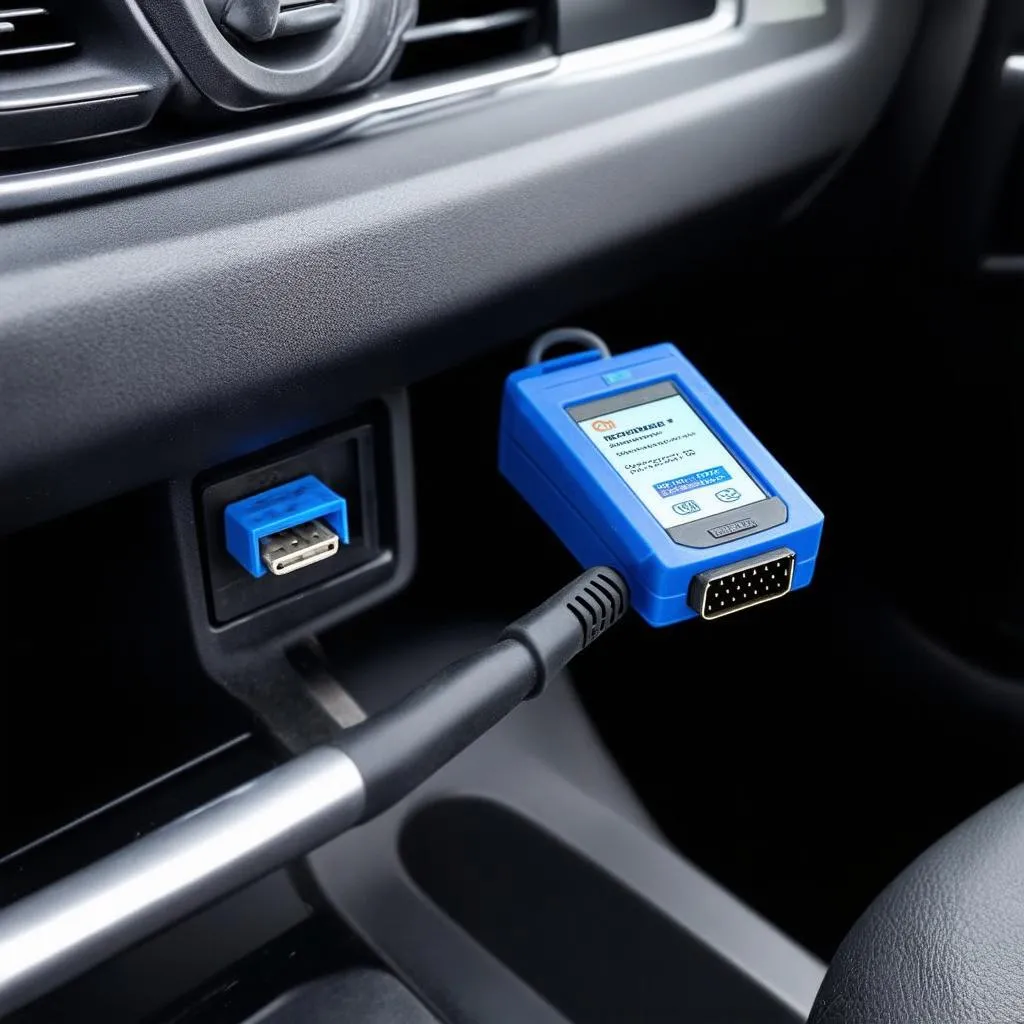Have you ever felt a pang of confusion when your “Check Engine” light blinked on, leaving you wondering what your trusty 2003 Mitsubishi Lancer was trying to tell you? Well, that little light is connected to a powerful system called OBD II, and sometimes, it just needs a little “wake-up call” to do its job. This article will be your guide to understanding and activating your OBD II sensor, getting you back on the road with confidence.
Decoding the Mystery: What Does “Activate OBD II Sensor” Even Mean?
Before we dive in, let’s clarify. The term “activate” can be misleading. Your OBD II sensor is always “active,” diligently monitoring your engine’s performance. However, after a repair or if the battery is disconnected, the system might need a “reset” to clear old codes and recognize new components.
Why is My OBD II Sensor Important?
Think of your OBD II system as the nervous system of your Mitsubishi Lancer. It continuously monitors various components, ensuring they’re functioning correctly. When it detects an issue, it triggers the “Check Engine” light and stores a diagnostic trouble code (DTC) in its memory. This code is like a breadcrumb trail, leading mechanics to the root of the problem.
Common Reasons You Might Need to Reset Your OBD II System
- Recent Repairs: If you’ve recently fixed an issue that triggered the “Check Engine” light, a reset is crucial.
- Battery Disconnection: Disconnecting the battery, even briefly, can sometimes require an OBD II reset.
- Emissions Testing: Many states require passing an emissions test, which relies on your OBD II system’s readiness.
Getting Down to Business: How to Reset Your OBD II System
While the exact process might vary slightly, here’s a general guide for most 2003 Mitsubishi Lancers:
- Locate the OBD II Port: This port is usually found under the driver’s side dashboard, near the steering column.
- Connect an OBD II Scanner: These handy devices, available online or at auto parts stores, plug into the port and communicate with your car’s computer.
- Turn the Ignition On: Turn your key to the “on” position but don’t start the engine.
- Access the Scanner Menu: Different scanners have varying interfaces, but you’ll generally navigate to a “Diagnostic Trouble Codes” or similar section.
- Clear the Codes: The scanner will guide you through clearing the existing codes.
- Verify Readiness Monitors: After clearing the codes, check if all readiness monitors are “complete.” If not, a short drive (following your owner’s manual recommendations) should activate them.
Remember: This guide is for informational purposes only. Always consult your vehicle’s owner’s manual or a qualified mechanic for specific instructions and safety precautions.
 OBD II Scanner Connected
OBD II Scanner Connected
Beyond the Mechanics: Feng Shui and Your Mitsubishi Lancer
While your OBD II system relies on technology, there’s a fascinating intersection with ancient practices like Feng Shui. Just as a cluttered home can disrupt energy flow, a neglected car might experience imbalances. Keeping your Lancer clean, organized, and well-maintained can be seen as a form of automotive Feng Shui, promoting harmony and smooth journeys.
FAQs: Addressing Your OBD II Concerns
Q: Can I drive with the “Check Engine” light on?
A: While it’s not recommended for extended periods, briefly driving with the light on might be necessary to complete the OBD II drive cycle and activate all readiness monitors. However, it’s crucial to address the underlying issue promptly, as ignoring it could lead to more severe problems.
Q: Will disconnecting the battery reset my OBD II system?
A: Disconnecting the battery can sometimes clear the codes but might not fully reset the system. It’s best to use an OBD II scanner for a complete reset.
Q: How often should I check my OBD II system?
A: It’s a good practice to scan your system for codes periodically, even if there’s no “Check Engine” light, especially before long trips or emissions testing.
 Mechanic Using Diagnostic Tool
Mechanic Using Diagnostic Tool
Beyond the Lancer: OBD II and Other European Makes
While this article focuses on the 2003 Mitsubishi Lancer, the principles of OBD II apply to most modern vehicles, including popular European brands like:
- Volkswagen
- Audi
- BMW
- Mercedes-Benz
Each make might have its quirks regarding resetting the system, so always refer to your vehicle’s owner’s manual or consult a trusted mechanic.
Need Expert Help? We’re Just a Message Away!
If you’re still facing challenges activating your OBD II sensor or have any other automotive concerns, our team of experts is here to help. Contact us via Whatsapp at +84767531508 for personalized assistance and expert advice. We’re available 24/7 to get you back on the road with peace of mind.
Drive with Confidence, Knowing Your Car is Speaking Your Language
Understanding your car’s OBD II system empowers you to take control of its health and ensure smooth, worry-free journeys. Remember, a little knowledge and preventative maintenance go a long way in keeping your 2003 Mitsubishi Lancer, or any vehicle, running its best for years to come.
Do you have any other OBD II questions or experiences to share? Let us know in the comments below!